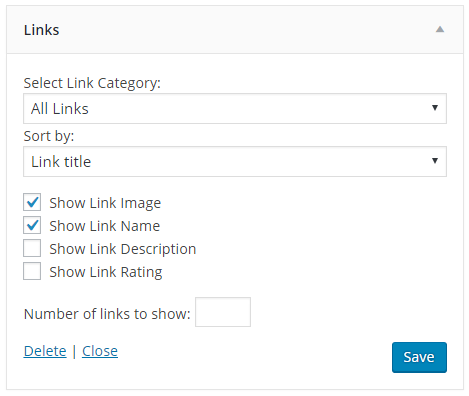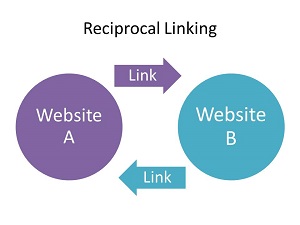Grey hat link building is tricky in SEO. It is not as safe as white hat methods. It also does not go as far as black hat tactics. Think of it as a middle way. These methods work around search engine rules without fully breaking them.
For SaaS companies wanting to improve their search rank, these ways can bring faster results than old SEO methods.
But quicker wins come with bigger risks. Search engines like Google are always changing their rules. What is okay today might be punished tomorrow. White hat methods focus on getting links naturally. Black hat tactics use shortcuts that can be risky.
Grey hat link building tries to balance speed and risk well. It can be an appealing choice for SaaS brands in tough markets. This approach allows them to test limits more freely. However, mistakes can hurt rankings or harm reputations badly.
This article explains the good and bad sides of grey hat link building. It will help you know when to be careful or when to avoid it altogether.
What Is Grey Hat Link Building?

Grey hat link building encompasses techniques that fall between white hat and black hat approaches.
These methods don’t directly violate search engine guidelines but push the boundaries of what’s considered acceptable. Grey hat tactics often exploit loopholes or ambiguities in search engine algorithms to gain advantages in search rankings.
Unlike black hat SEO, which deliberately violates search engine rules through practices like keyword stuffing or hidden text, grey hat methods aren’t explicitly forbidden. However, they don’t align with the spirit of white hat SEO, which focuses on creating valuable content and earning links naturally through quality and relevance.
Grey hat link building might include practices such as buying expired domains with existing backlinks, creating content primarily for links rather than user value, or engaging in reciprocal linking schemes that appear natural but are orchestrated for SEO benefits.
Why Is Grey Hat Link Building Important?
Grey hat link building techniques attract attention because they can produce faster results than strictly white hat approaches.
In highly competitive niches where everyone follows white hat techniques, it can take months or years to see significant improvements in search engine rankings. Grey hat methods can accelerate this process by taking shortcuts that white hat SEO doesn’t allow.
For businesses with limited time or resources, grey hat link building might seem appealing. It offers a middle ground where you can potentially improve your website’s visibility without venturing into high-risk black hat territory that could result in permanent penalties.
Knowing grey hat link building is also important for defensive purposes. Even if you choose not to use these techniques, seeing how competitors might be using them helps you make sense of unexpected ranking changes and adapt your SEO strategy accordingly.
Common Grey Hat Link Building Strategies
Guest Posting

Guest posting involves writing content for other websites in exchange for a backlink. While guest blogging itself is a legitimate white hat strategy, it becomes grey hat when the primary purpose is link acquisition rather than providing value to the host site’s audience.
Signs of grey hat guest posting include:
- Mass outreach with generic pitches
- Minimal effort put into content quality
- Irrelevant topics chosen solely for link opportunities
- Excessive keyword-optimized anchor text
Search engines value natural link patterns, and manipulative guest posting can create unnatural link profiles that may eventually trigger penalties.
Product Reviews and Giveaways

Offering free products in exchange for reviews with backlinks falls into grey hat territory. While getting reviews is legitimate, the explicit exchange of goods for links violates Google’s guidelines against link schemes.
The line becomes blurry when:
- Reviews are genuine but influenced by free products
- Reviewers aren’t required to include links but usually do
- The relationship between the gift and the link isn’t disclosed
Directory Submissions

Submitting your website to online directories is a long-standing link building tactic.
It becomes grey hat when:
- Submissions are made to low-quality or irrelevant directories
- The same information is submitted to dozens or hundreds of directories
- Directories exist primarily for link building rather than user value
While some directory submissions (particularly to high-quality, relevant directories) remain valuable, mass submissions for link quantity rather than quality fall into grey hat territory.
Widget Links

Creating useful widgets or tools that other websites can embed, with embedded links back to your site, can be effective for building links.
This becomes a grey hat when:
- The widget provides little value to users
- Links are hidden or not disclosed
- Anchor text is heavily optimized for target keywords
- The primary purpose of the widget is link acquisition
Reciprocal Linking

Reciprocal linking occurs when two websites agree to link to each other. While natural reciprocal links can occur in any industry, systematic exchanges purely for SEO benefits are considered grey hat. This includes:
- Link exchange networks or schemes
- “You link to me, I’ll link to you” arrangements
- Links that aren’t contextually relevant
- Excessive reciprocal linking patterns
Grey Hat Link-Building Technique: Increasing Rankings On The Edge Of Search Engine Guidelines

Private Blog Networks (PBNs)
Private Blog Networks (PBNs) are networks of websites controlled by a single entity but designed to appear independent. These networks exist primarily to provide backlinks to a main “money site.”
PBNs typically:
- Use expired domains with existing link equity
- Create the appearance of legitimate, independent websites
- Provide contextual links to the target website
- Carefully manage footprints to avoid detection
PBNs are considered grey hat because they technically violate Google’s webmaster guidelines against link schemes, but when well-executed, they can be difficult to detect.
Expired Domains For Link Equity
Purchasing expired domains with existing backlinks is a common grey hat tactic. SEO professionals may:
- Restore the domain with similar content
- Redirect the domain to their main website
- Use the domain as part of a PBN
- Build out the site and add links to their main site
This practice uses the link equity already pointing to the expired domain, essentially “borrowing” authority that was earned by the previous owner.
Link Exchanges (Reciprocal Links)
As mentioned earlier, link exchanges involve websites agreeing to link to each other.
More sophisticated grey hat approaches might include:
- Three-way linking (Site A links to Site B, Site B links to Site C, Site C links to Site A)
- Delayed reciprocation to make the pattern less obvious
- Using different anchor text and contexts to appear natural
- Organizing link exchanges within private groups
Using “Soft” Paid Link
While directly buying links violates search engine guidelines, “soft” paid links involve less direct transactions, such as:
- Paying for “sponsored content” that includes links
- Offering discounts or free products in exchange for links
- Contributing to memberships or associations that provide backlinks
- Donating to causes that are linked to sponsors
These approaches create plausible deniability about the transactional nature of the links.
Content Syndication Or Spinning
Content syndication involves republishing content across multiple websites. Content spinning takes existing content and rewrites it algorithmically to create “unique” versions.
Both can be grey hat when:
- The primary purpose is link building rather than reaching new audiences
- No canonical tags are used to indicate the source
- Spun content offers little value
- The practice is done at scale for link quantity
Commenting On High-DA Blogs
Leaving comments on high Domain Authority (DA) blogs can be legitimate engagement, but becomes grey hat when:
- Comments are generic and add little value to the discussion
- The same comment is posted across multiple blogs
- The primary purpose is to include a backlink
- Comments are automated or outsourced at scale
Pros and Cons of Grey Hat Link-Building Techniques

Grey hat link-building comes with both benefits and problems.
Pros:
- Faster Results: Grey hat link building can produce faster ranking improvements than strictly white hat approaches. When competitors are all using similar white hat tactics, grey hat methods can provide a competitive edge by accelerating link acquisition and authority building.
- Flexibility: Grey hat provides more tactical options than white hat SEO alone. This flexibility can be valuable in highly competitive niches where strict adherence to white hat principles might limit progress.
- Short-Term Gains: For short-term projects or in situations where immediate results are needed, Grey Hat can deliver quicker improvements in search visibility and traffic.
Cons:
- High Risk of Penalties: The biggest downside of grey hat link building is the risk of penalties from search engines. These can range from decreased rankings for specific pages to complete deindexing of your website.
- Brand and SEO Damage: If penalties occur, recovering can take months or years. The damage extends beyond SEO to potential reputation harm if customers or partners detect manipulative practices.
- Resource-Intensive Monitoring: Grey hat link building requires constant vigilance to detect algorithm changes and adjust strategies accordingly. This monitoring demands significant time and resources.
Are Grey Hat Backlinking Techniques Worth The Risk?

Whether grey hat link building is worth the risk depends on several factors:
- Your industry and competition level
- The visibility of your website
- Your risk tolerance
- Short-term vs. long-term goals
- Available resources for monitoring and adjusting
For established brands with significant online visibility, the risk of grey hat techniques often outweighs potential benefits. The damage from penalties could undo years of legitimate SEO work and harm brand trust.
For newer websites in hyper-competitive niches, the calculated use of certain grey hat techniques might help gain initial traction. However, this approach should be temporary and eventually transition to more sustainable white hat methods.
Grey Hat Link Building – A Risky Business?

Potential Penalties From Search Engines
Search engines can impose various penalties for grey hat link building:
- Algorithmic penalties that automatically reduce rankings
- Manual penalties applied by human reviewers
- Devaluation of specific links or linking patterns
- Complete removal from search results in severe cases
Google’s Penguin algorithm specifically targets unnatural link patterns, making many grey hat linking techniques increasingly risky.
Impact On Website Reputation and Authority
Beyond direct penalties, grey hat link building can damage your website’s reputation with:
- Reduced trust from search engines
- Association with low-quality websites
- Potential exposure of manipulative tactics to users
- Long-term difficulty in building genuine authority
When To Avoid Grey Hat Link-Building Tactics?
High-Scrutiny Industries
Some industries face higher scrutiny from search engines due to their impact on users’ health, finances, or well-being.
These “Your Money or Your Life” (YMYL) categories include:
- Healthcare and medical information
- Financial advice and services
- Legal information
- News and current events
In these industries, the risk of grey hat techniques is significantly higher.
Reputation and Sustainability
Businesses that depend heavily on trust and reputation should generally avoid grey hat tactics.
This includes:
- Established brands with significant market presence
- Professional service providers
- Educational institutions
- Non-profit organizations
Long-Term Growth Goals
If your business plan aims for steady growth, grey hat methods can be risky. These risks are not worth taking. Quick ranking boosts do not help if you lose in the long run.
Black Hat Vs. White Hat Vs. Grey Hat Link Building

Here’s how the three approaches compare:
White Hat Link Building:
- Follows search engine guidelines completely
- Focuses on creating valuable content for users
- Earns links through quality, relevance, and relationships
- Takes longer but produces sustainable results
- Minimal risk of penalties
Grey Hat Link Building:
- Exists in a grey area of search engine guidelines
- May manipulate link patterns while maintaining appearances
- Balances user value with SEO benefits
- Produces faster results but with moderate risk
- May require frequent adjustment as algorithms evolve
Black Hat Link Building:
- Deliberately violates search engine rules
- Focuses exclusively on manipulating rankings
- Creates little value for users
- Can produce very fast but temporary results
- High risk of severe penalties
Is Grey Link Building Worth It?

The value of grey hat link building can vary based on your situation.
For new websites, it can help them compete. These sites often have few resources but need to grow in tough markets. Using smart grey hat methods may give them a boost at first. Still, this should lead to more lasting methods later on.
For firms that want fast growth and can take risks, grey hat may fit their aims. They must be ready for possible problems and have backup plans in place.
For most already established businesses, especially those in delicate fields or with strong brands, the dangers of grey hat link building are too high. The long-term harm from penalties can outweigh any short-term wins in ranking.
Best Practices For Grey Hat Link Building
If you decide to include some grey hat techniques, follow these principles to minimize risk:
Diversify Your Link Profile
Never rely exclusively on grey hat methods. Maintain a diverse link profile with:
- Natural editorial links
- Brand mentions
- Citations
- Social media signals
- Industry associations
This diversity makes patterns less detectable and reduces the impact of any single technique being penalized.
Monitor Backlinks Regularly
Constant monitoring is essential when using grey hat techniques:
- Track your backlink profile for suspicious patterns
- Watch for algorithm updates and industry news
- Be prepared to disavow links if necessary
- Monitor competitors for similar tactics
Limit Grey Hat Techniques
Use grey hat as a supplement to white hat strategies, not a replacement:
- Set a maximum percentage of grey hat links
- Gradually reduce reliance on grey hat over time
- Focus more resources on content creation and legitimate outreach
- Use grey hat primarily for competitive niches
Create Relevant Content
Even when employing grey hat link building, maintain content quality:
- Ensure all content provides genuine value to users
- Address search intent effectively
- Create linkable assets that earn natural links
- Focus on relevance to your industry and audience
Conclusion
Grey hat link building is between following search engine rules and breaking them. These methods can help in some cases, but they also come with big risks. You need to think hard about the rewards versus these risks.
For many businesses, especially those wanting to grow long-term and care about their brand, white hat link building is better. This method leads to more stable success with search engines.
Creating good content, improving user experience, and getting links the right way may take longer. However, this builds real value over time. If you decide to use grey hat methods, be careful.
Keep a mix of links, watch your results closely, and plan to switch to white hat methods later on.
At VH-info, we help SaaS companies create strong link-building plans that fit their goals and risk levels. Our method focuses on lasting methods that build authority while understanding tough markets.
Reach out to us today to see how we can help your SaaS company rank better in search results through smart link building.



